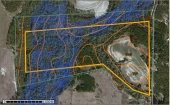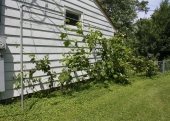




"I never had any other desire so strong, and so like to covetousness, as that one which I have had always, that I might be master at last of a small house and a large Garden." -Abraham Cowley, The Garden, 1666








"You must be the change you want to see in the world." "First they ignore you, then they laugh at you, then they fight you, then you win." --Mahatma Gandhi
"Preach the Gospel always, and if necessary, use words." --Francis of Assisi.
"Family farms work when the whole family works the farm." -- Adam Klaus








"I never had any other desire so strong, and so like to covetousness, as that one which I have had always, that I might be master at last of a small house and a large Garden." -Abraham Cowley, The Garden, 1666




"You must be the change you want to see in the world." "First they ignore you, then they laugh at you, then they fight you, then you win." --Mahatma Gandhi
"Preach the Gospel always, and if necessary, use words." --Francis of Assisi.
"Family farms work when the whole family works the farm." -- Adam Klaus
 1
1








Country oriented nerd with primary interests in alternate energy in particular solar. Dabble in gardening, trees, cob, soil building and a host of others.






